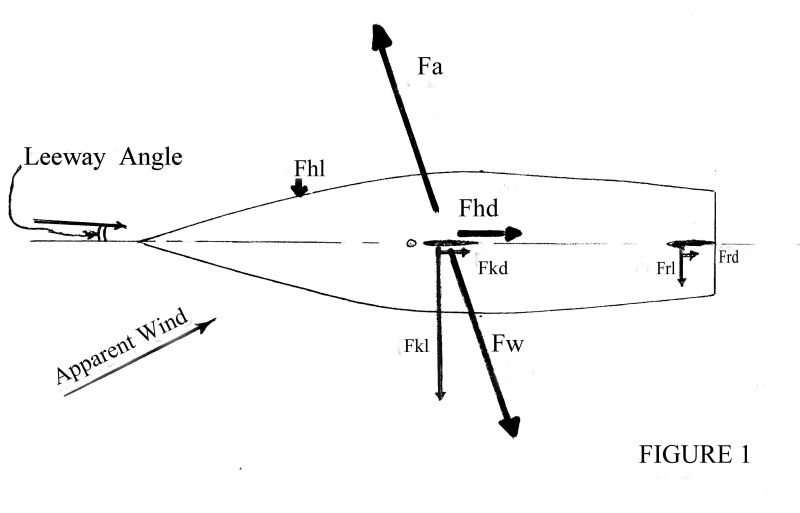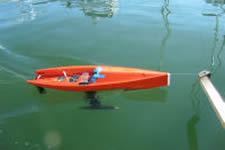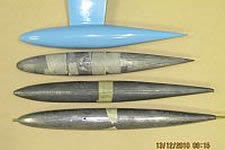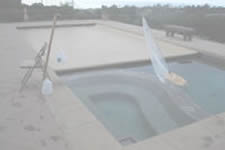Part 1 Balance of a Yacht to Windward
Part 1 Forces
Preface
There are lots of myths about boat balance. In the old days people cut out cardboard profiles of the side view of the underwater part of their designs and by hanging this profile they found a centre of area. There were then rules about how far forward of this point the centre of area of the sails should be. Boats designed by this means often had appalling balance (I have actually sailed a few). Sparkman and Stephens, the cunning devils, overcame this problem with their lovely east coast yawls. Often these had two centreboards, one aft of the other, and of course, the mizzen. With that combination you could get the boat perfectly balanced on any point of sailing even if the calculations were awry. A very good solution!
The discussions on this article are intended to give a better understanding of the forces and physics involved. I hope they help.
The discussion is split into four parts:
Part 1 Describes the various forces acting on a boat to windward.
Part 2 Describes the way the forces act to allow course keeping to windward in a wind shift. This part also describes the way the forces act to allow course- keeping in a gust, and things that can go wrong.
Part 3 Gives numerical values for the effect of various changes (like heeling or changing the rudder angle) on the resultant wind and water forces. This should help defray some myths about tuning.
This is part 1.
1.0 The forces acting on the yacht
A yacht going to windward is acted on by wind and water forces as shown in Figure 1. For the boat to continue in a straight line in a steady wind the resultant wind force needs to be exactly equal and opposite to the resultant of all the water forces. This is discussed later but for a start we need to describe all the forces and to know some things about them.
Fa in figure 1 is the resultant of the wind force on the sails, spars, stays and hull. Typically it will act on a line passing some distance forward of the center of area of the sail plan and will be in a direction aft of a line through this point that is at right angles to the apparent wind. How far aft depends on how efficient the sail plan is and how much extraneous wind drag items there are. For racing model yachts it is probably about 10 degrees or so aft of the line at right angles to the apparent wind. Its point of application will also depend on the heel angle, the more the boat heels, the further out this point of application will be.
Fw is the resultant of all the water forces on the hull. These are the drag forces Fhd Fkd Frd, on the hull keel and rudder respectively, and the lift forces and Fhl , Fkl and Frl from the hull, keel and rudder respectively. All these forces add up to make this resultant force Fw and each is described separately in the following.
Fhd is the hull drag, consisting of normal drag plus some extra because the hull is moving at an angle through the water due to leeway. On most IOMs this leeway is about two degrees in midrange A rig conditions, but is more on less efficient boats, and much more with a C rig. The hull drag force will act slightly to leeward of the centreline because as the boat heels, there is more boat in the water to leeward.

Fkd and Frd are the drag forces of the keel (including the bulb) and rudder respectively, and these are related to the side force they have to generate to counter the side force from the wind. Because they act below the waterline they will be to windward of the centre line once the boat heels, and the more the boat heels the further to windward they will be.
Fhl is the lateral resistance of the hull as the result of leeway. The hull is very much less efficient than the keel and rudder in producing side force (that is, there is a lot more drag developed for a given amount of side force). Tests on a dinghy showed this force to be about 2.5% of the total side force, the rest coming from the keel and rudder. On a 5.5metre 20% of the side force to windward came from the hull but this boat had a far less efficient keel than that used on model racing yachts, and the probable figure for boats like IOMs is probably under 10%. Where this force acts depends on the hull shape. Older models had very similar waterlines fore and aft, and in these the side force would be only a little ahead of mid-ships. On more modern wedge shapes, the force will be further forward. I once owned an IOR design 35 footer that dipped its bow and lifted its stern (and some of the rudder too) out of the water when it heeled. You can imagine the results were not very nice!
Fkl and Frl are the sideways forces of the keel and rudder respectively and these contribute something like 90% or more of the lateral resistance needed. They will act from about 25% back from the leading edge in parallel sided foils. These forces are a function of the leeway angle, and in fact the leeway angle increases until the sum of these and Fhl above equals the side force from the wind. The relative magnitude of the keel and rudder forces depends on their respective size and shape but also on the helm angle. On many model yachts it is considered desirable for the boat to sail to windward with the rudder on the centre-line (i.e. zero helm angle). In such a case the angle of attack on the rudder will be a less than on the keel because of downwash from the water flowing over the keel, and the water force per unit area on the rudder will be in the order of half that on the keel.
2.0 How do all these forces come into equilibrium?
It always seems a bit of magic that all these forces arrange themselves to be just the right magnitude and direction and position to allow a yacht to sail in a straight line. For this to happen the resultant of all the water forces must be exactly equal and opposite in magnitude and direction the resultant of the wind force, and also be along the same line of action.
Actually the physics is not too difficult. For a start let us assume there is particular wind and apparent wind angle the boat is to sail at. This sets the magnitude and direction of the wind force Fa, which in turn sets the force pushing the boat forward and the force pushing the boat to leeward.
What then happens is that the boat speeds up until the resistances Fhd, Fkd and Frd add up to the driving force of the wind. At the same time the boat begins to make leeway until the side forces Fhl, Fkl and Frl add up to the sideways force from the wind.
There is one more thing. For the boat to sail in a straight line the wind force and the resultant of all the water forces have to line up. On a full size boat the helmsman does this by changing the rudder angle and hence the relative sizes of the side forces Fkl of the keel and Frl of the rudder. If weather helm is applied, the rudder produces more side force and unloads the keel, resulting in a movement aft of the resultant water force Fw. By contrast if the helm is put down, the reverse happens. The helmsman therefore adjusts the helm angle so the boat goes on a steady course and the water and wind forces are brought into line. In model yachts the boat changes direction until the forces line up. This is described in Parts 2 and 3
There a few truisms that come from all this. It is better to have the keel and rudder a little bit too big than a little bit too small. This is because if they are too small, there can be a huge penalty in additional drag because they will operate at an inefficient angle of attack and can even stall. On the other hand, if they are a bit big, all you pay is a bit of skin friction which is likely to be a much smaller penalty.
It is also better to have the keel a bit too far forward (relative to the rig) than a bit too far aft. This is because if it is a little too far forward then all that happens is that the rudder takes a slightly bigger share of the side load, and if the rudder is reasonably efficient (and not too small, 40% of the keel area is normal) the loss in efficiency will not be great. On the other hand if the keel is a bit too far aft relative to the rig, the resultant wind force Fa will act ahead of the keel. This means the rudder has to produce a force in the same direction as the sail force to get the boat to go straight. This is an additional side force that has to be resisted by the keel so you get a double whammy of drag from the side force.
Well, that is all for Part 1. The next part describes how all these forces miraculously rearrange themselves when the wind changes.
Colin Thorne December 2010.




 Behaviour
Behaviour